| Managing behaviour that challenges |
| All about this course This managing behaviour that challenges course will help students to understand how to help children manage their own behaviour. It will help you to examine children's behaviour and develop ideas and strategies that can be applied in the work setting. This course covers the basic needs of children, why it is important that these needs are met and how these can be met. It will also cover the different types of behaviour that challenges and give some examples. Finally we look at best ways to set boundaries for children to follow and how this will help with their behaviour. Our managing behaviour that challenges course is designed for teachers, carers or anyone else working with children. You will earn 3 CPD points on completion of the course. Fully CPD registered Completed online with instant downloadable certificate Fully printed certificate posted next day Covers all required legislation and practices Complete the online multiple choice assessment as many times as you need to pass Units covered Unit 1 – Understanding the Causes of Behaviour that Challenges – In our first unit we will be looking at the basic needs of a child and what happens when the needs are not met, this unit will also include examples of the kinds of behaviour that challenges and how they may come about. Unit 2 – Gaining the Trust of Children – This unit will be exploring the transitions in children's lives and how these can be challenging for some groups, it will also look at why it is important to have an effective relationship with children, as well as how to prepare children for transitions in their life. Unit 3 – Setting Boundaries for Children To Follow – In this unit we will be looking at the boundaries that are set for children and why boundaries are necessary, as well as the benefits of them. This unit will also look at negotiation and what may happen if negotiation doesn't work. Unit 4 – Praise and Rewards – This unit will consider the importance of praise and rewards when trying to reduce or prevent incidents of behaviour that challenges, it will also look at the operant conditioning theory. Unit 5 – Communication– In this unit we will look at communication and why it is important when working with children that experience behaviour that challenges, this unit will also look at alternative forms of communication that may be used. Unit 6 – Autism within Education – In this unit we will be exploring what happens when a child breaches boundaries and does not meet expectations that have been placed upon them. This unit will also cover the use of timeouts and the effectiveness of ignoring unwanted behaviour. Unit 7 – Self-reflection and Self Care – In our final unit we will be looking at the importance of self-reflection and self-care for individuals who live or work with children who experience behavior that challenges. We will also look at how people who work with children who experience behaviour that challenges can protect themselves and look after their mental health.
Price: 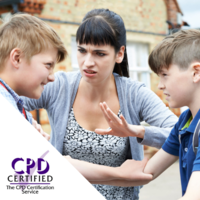 |
| Manual Handling |
| All about this course This Manual Handling course is designed to teach the basics of moving and handling objects in the workplace safely. This includes pushing, pulling, lifting and any other type of movement of objects. Understanding risk assessments and how to correctly handle objects is essential to reduce the risk of being injured in the workplace. This course will develop your knowledge of manual handling to ensure the risk is reduced. In order to complete the course, you must achieve 80% or more in the final multiple choice quiz. You will earn 3 CPD points on completion of the course. Fully CPD registered Completed online with instant downloadable certificate Fully printed certificate posted next day Covers all required legislation and practices Complete the online multiple choice assessment as many times as you need to pass Units covered Unit 1 – Introduction to manual handlin In this first unit of the course we will be looking at what manual handling is and the risks associated with various types of loads. The responsibilities of employees and employers will be covered as well as HSE guidance. Unit 2 – Risks in the workplace: Up next we will look at various risk factors that can be present in the workplace and how we go about assessing these. The acronym TILEO will be explained as well as the types of injuries that people could sustain in certain situations. Unit 3 – Risk assessments: This unit will cover risk assessments in more detail and explain who is responsible for carrying these out and how. The unit will also cover the three stages of risk evaluation and what can be deemed acceptable risk. Methods of recording your findings will be introduced as well. Unit 4 – Reducing risks and introducing control measures: Next we will look at control measures and ways in which risks can be reduced. There are many different aids and equipment that can be used to minimise risk which will be covered here. Control measures and ways in which we can reduce risks to be as low as possible will be explained. Unit 5 – Manual handling techniques: The final unit of this course will look at the different manual handling techniques and how these are carried out. These techniques will include lifting as well as pushing and pulling. Checks to be carried our and safe team practice will be thoroughly explained.
Price:  |
| Mental Capacity Act |
| All about this course The Mental Capacity Act aims to support people that may lack capacity to understand situations. In the course we will look at the five key principles of the Mental Capacity Act to ensure you have a strong knowledge of how and when to make a decision on someone behalf. Working in a person-centred manner will be at the heart of all you do in a care role and this will be incorporated into the course materials. The link between the MCA and Deprivation of Liberty Safeguards will also be covered. This course is suitable for anyone working within the care sector such as nurses, care assistants, social workers and even friends and family of someone that may require capacity assessments. In order to complete the course, you must achieve 80% or more in the final multiple choice quiz. You will earn 2 CPD points on completion of the course. Fully CPD registered Completed online with instant downloadable certificate Fully printed certificate posted next day Covers all required legislation and practices Complete the online multiple choice assessment as many times as you need to pass Units covered This Mental Capacity Act course covers the following units: Unit 1 - Legislation: The first unit of this course will look at the different legislation underpinning the Mental Capacity Act. The unit will explain when the Mental Capacity Act is applicable and how it relates to DoLS. We will also look at the protection of carers in the MCA. Unit 2 - The five key principles: This unit focuses on the five key principles of the Mental Capacity Act and will introduce each. We will look at each principal in this unit so that you have a better understanding of when each is applied. A number of case studies will be introduced as well so that your knowledge can be applied to real situations. Unit 3 – Assessing capacity: This unit will focus on capacity assessments and situations when people may lack capacity. The unit will start by ensuring you have a strong understanding of what capacity is and the situations when people may not have capacity. We will then move on to explore the 2-step test for assessing capacity and cover the link between DoLS and capacity assessments. Unit 4 – Making decisions in the best interests of the individual: Here we will look at the types of decisions that can be made for someone who lacks capacity and how people can be helped to make their own decisions. The unit will cover advocates and deputies so that you have an understanding of these roles, as well as the different powers of attorney relating to the Mental Capacity Act. Unit 5 – Disagreements and legal powers: In this final unit we will look at disagreements regarding capacity and what legal powers are available when a dispute happens. The unit will cover common disputes and forms of abuse relating to someones capacity. We will then cover the ways too handle these disputes and the Court of Protection’s role in these situations.
Price: 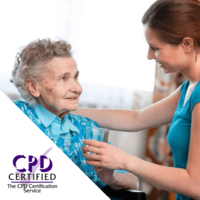 |
| Mental Health Act |
| All about this course The Mental Health Act is the main piece of legislation that outlines the assessments and rights of people with mental health issues. It covers the rights of individuals who have been detained under the MHA as well as their families rights. The course covers all aspects of the Mental Health Act including Mental Health Tribunals. This means that, upon completion, students have a much deeper knowledge of the legislation underpinning mental health to use in their professional careers. This course on the Mental Health Act is perfect for anyone working in the care sector including nurses, mental health practitioners, care assistants and other legal professionals. In order to complete the course, you must achieve 80% or more in the final multiple choice quiz. You will earn 3 CPD points on completion of the course. Fully CPD registered Completed online with instant downloadable certificate Fully printed certificate posted next day Covers all required legislation and practices Complete the online multiple choice assessment as many times as you need to pass Units covered Our Mental Health Act course covers the following units: Unit 1 - Introduction to the Mental Health Act 1983: In this first unit we will look at the key points of the Mental Health Act and when people can be detained under this legislation. The unit will cover the different mental disorders according to the MHA as well as the five overarching principles included. We will also look at the rights of people who are detained under the Mental Health Act and how detentions are arranged. Unit 2 - The Mental Health Act Code of Practice guiding principles: In this unit we will look at the different legislation underpinning the Mental Capacity Act. The unit will explain when the Mental Capacity Act is applicable and how it relates to DoLS. We will also look at the protection of carers in the MCA. Unit 3 – How the Mental Health Act Sections Are Used: Next we will look at the sections of the Mental Health Act and how each one is used. We will introduce various case studies so that you have a good knowledge of how the sections relate to real world issues. Different sections of the Mental Health Act will be introduced and the importance of each one explained. Section 117 aftercare will be of particular importance and the needs of individuals under this section will be covered. Unit 4 – Professional Roles under the Mental Health Act: Next we will look at the roles of people that work with the Mental Health Act and their responsibilities. Approved Mental Health Professionals (AMHPs) will be explained and their jobs looked at in detail. The unit will focus on this role but also cover a few others as well. Unit 5 – Electro Convulsive Therapy (ECT): Throughout this unit we will look at the controversial Electro Convulsive Therapy (ECT) and how it is used today. ECT is only used in very specific circumstances but can have benefits to service users. This unit will look at what ECT is and what issues it can help with. It will also look at the reasons why ECT is so controversial and the side effects which can be seen. Unit 6 – Supervised Community Treatment: This next unit will focus on Supervised Community Treatment (SCT) and the ways in which people can be treated with the help of those around them. There are a number of ways in which the community can be used to help people through a Community Treatment Order which will be explained in this unit. Unit 7 – Mental Health Tribunals: In this final unit we will explore Mental Health Tribunals and what these entail. The unit will explain the aims of tribunals as well as who can apply for these and when. We will then look at what happens during the hearing and the appeals process.
Price: 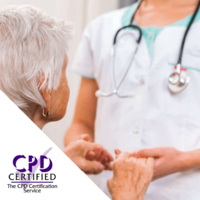 |
| Mental Health Awareness |
| All about this course Mental health awareness is something that is vital to everyone. This course is perfect to ensure you have a strong understanding of what mental health is and how to support people who may have a mental health issue. In the 5 units, this course covers the risk factors of mental health, the issues that people face as well as social attitudes to mental health. This course is perfect for anyone looking for a better knowledge of mental health. Since mental health affects us all, this course is fantastic for anyone working in any industry. In order to complete the course, you must achieve 80% or more in the final multiple choice quiz. You will earn 2 CPD points on completion of the course. Fully CPD registered Completed online with instant downloadable certificate Fully printed certificate posted next day Covers all required legislation and practices Complete the online multiple choice assessment as many times as you need to pass Units covered Unit 1 – What is mental health?: In our first unit you will learn what mental health is. We will look at the definition, the components of mental well being, as well as how stress and ill health are linked. We will finish off by looking at the components of mental well-being. Unit 2 – Risk factors: In this unit we will look at what a risk factor is and the risk factors that can affect an individual’s mental health. The risk factors that affect an individual will be covered under four different categories. Within these categories there are several examples of mental health problems, that can affect individuals throughout their lifetime. We will also look at these different types of mental health problem, and the risk factors that can cause these problems. Unit 3 – Mental health care and the problems people face: Now we will look at how mental health care has changed over the centuries and how there has been a profound change to mental health care as much more is now understood about mental illness. We will look at the different problems and how they may affect the individual with mental health problems as well as the different attitudes to mental illness and how they can affect the individual and the people around them. Unit 4 – Social attitudes to Mental Illness: Here we look at the different social attitudes towards mental illness. Different attitudes to mental illness and how they can affect the individual, the people around them and the different impacts these attitudes can have on an individual with mental illness will be covered. Unit 5 – Legislation in Relation to Mental Illness: Finally we will look at the different legislation that surround Mental illness. and what these different legislations entail, their implications and the different legal provisions for individuals who are unable to make decisions for themselves.
Price: 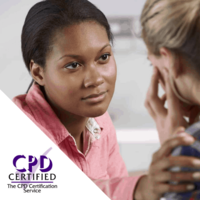 |
| Mental Health CPD bundle |
| Certificates for courses in this bundle are downloadable only - a hard copy is not sent to you. All about this course bundle Our Mental Health course bundle is great for anyone looking to keep up with their CPD and working in a mental health or counselling role. CPD is vital for these types of jobs so that you can continually improve and offer the best support possible to service users. On this package you can access numerous training courses all at once and download your certificates for each once you pass. All courses are regulated with the CPD Certification Service and fully approved as proof of continued professional development. You can enrol for this Mental Health CPD package any time and access lasts for 12 months from the moment you purchase. Fully CPD registered Completed online with instant downloadable certificate Multiple courses included Covers all required legislation and practices Complete the online multiple choice assessment as many times as you need to pass 12 month access Courses covered
Price: 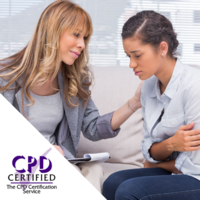 |
| Moving and Handling in Care |
| All about this course Studying for this Moving and Handling in Care course will ensure that you understand the risks of incorrect handling in the care sector. The physical harm which can be caused to people will be explored and techniques to assess risk will be introduced. Correct procedures for using a wide range of different lifting equipment will also be covered in this course. Legislation and procedures relevant to care settings will be fully understood upon completion. The course is great for anyone working with elderly or physically disabled people. This could include nursing staff, carers and specialist support workers. In order to complete the course, you must achieve 80% or more in the final multiple choice quiz. You will earn 2 CPD points on completion of the course. Fully CPD registered Completed online with instant downloadable certificate Fully printed certificate posted next day Covers all required legislation and practices Complete the online multiple choice assessment as many times as you need to pass Units covered Unit 1 – Introduction to Moving and Handlin The first unit of this Moving and Handling in Care course will introduce the various legislation relating to health and safety and the types of moving and handling you may be required to carry out. Responsibilities of employees and employers will also be covered as well as PUWER and LOLER. Unit 2 – Risks in the workplace: This unit will consider the types of injury that might come about due to moving and handling procedures being carried out incorrectly and who is most at risk. Discussion will also include how risk is increased and how risk is assessed in order to control the possible risks that are involved in any sort of moving and handling. Unit 3 – How to Use Equipment Safely: Next we will introduce different equipment that can be used in moving and handling and how to operate these safely. A number of different pieces of equipment will be covered including hoists, wheelchairs, wedges, lifting handles and various others. The need for PPE and safety precautions will also be examined. Unit 4 – Effective Techniques for Moving and Handlin This final unit will look at the factors that are important when preparing someone to be moved or repositioned, such as health and safety factors and how to prepare the general environment. After this there will be an overview of some of the most common techniques used for moving and handling and how these can be executed safely.
Price:  |
| Needles and Sharps |
| All about this course Needles and sharps are something that everyone working in the health care industry should have good knowledge on. In this course we will be looking at the laws surrounding sharps, how employees can keep themselves protected, as well as using needles and sharps safely and why it is so important to. This course is perfect for nurses, healthcare assistants and anyone else who works with needles and sharps in their role. In order to complete the course, you must achieve 80% or more in the final multiple choice quiz. You will earn 3 CPD points on completion of the course. Fully CPD registered Completed online with instant downloadable certificate Fully printed certificate posted next day Covers all required legislation and practices Complete the online multiple choice assessment as many times as you need to pass Units covered Unit 1 – Introduction to Sharps and Needles – In our first unit it will be exploring what needles and sharps are and what the risks could be to individuals and staff that don’t handle needles and sharps correctly. Unit 2 – Sharps and the Law – In this unit we will be exploring the legislations on using and disposing of needles and sharps and why they have been put in place. Unit 3 – Protecting Employees – This unit will look at how to carry out risk assessments to help prevent exposure to hazards as far as reasonably possible. Unit 4 – Using Needles and Sharps Safely – This unit will look at the safe usage of sharps, it will also look at the types of injury that can be caused by sharps and how these can be dealt with. Unit 5 – Disposing of Needles and Sharps Safely – In our final unit it will look at the importance of disposing needles and sharps safely and how this is carried out in line with the regulations and legislations.
Price: 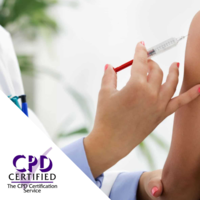 |
| Noise Awareness |
| All about this course This Noise Awareness course covers everything that you need to know about keeping yourself and others safe when working in conditions where you are exposed to noise. The units cover what noise is, how to measure sound, safety equipment as well as legislation relating to noise in the workplace. The signs and symptoms of temporary and permanent hearing loss are discussed so that students are aware of the consequences of over-exposure to noise. Risk assessment skills will also be explored so that the chances of hearing damage is reduced. This course is suitable for people who are at risk of noise, this includes construction workers, road workers, demolition workers, manufacturing workers and agricultural workers. On completion of the course, students will feel they have better knowledge on noise and the risks it can have to peoples health. Students will also know now how to keep themselves and others safe at work. In order to complete our Noise Awareness course, you must achieve 80% or more in the final multiple choice quiz. You will earn 3 CPD points on completion of the course. Fully CPD registered Completed online with instant downloadable certificate Fully printed certificate posted next day Covers all required legislation and practices Explains the risks of exposure to noise Counted as staff training on noise awareness Complete the online multiple choice assessment as many times as you need to pass Units covered Unit 1 - Introduction to noise - In our first unit we will be looking at what noise is, including what sound is and how the characteristics of sound waves affect the level of noise. We will also look at the terminology used in sound measurement and explore the decibel scales and frequency weightings in further detail. Unit 2 - Noise legislation - In this unit we will be exploring the general legislation such as Health and Safety Work Act 1974, the Management of Health and Safety at Work Regulations 1999, Noise at Work Regulations 1989 and the Control of Noise at Work Regulations 2005. We will also look at environmental noise legislation applicable to workplaces. Unit 3 - The human ear and noise health effects - In this unit we will explore the physiology of the human ear, including the three main sections. We will also learn about some of the health effects that can occur from exposure to hazardous noise levels and the temporary and permanent effects. We will also look at some of the signs and symptoms of hearing loss. Unit 4 - Identifying, assessing and controlling risks - This unit will look at the overall requirements of noise risk assessment in the Control of Noise at Work Regulations 2005, we will also explore why risk assessments are important and will cover the legal, moral and financial reasons. We will also explore the steps that should be taken when carrying out a risk assessment Unit 5 - Safety aspects for consideration - This unit will look at an overview of why noise needs to be controlled and will look at how sound waves can reach workers in the workplace. We will also explore methods of controlling risks. Unit 6 - Training and safety equipment - In our final unit we will be considering the different types of noise training and why it is required to complete them. We will also look at what Personal Protective Equipment (PPE) is and why it shouldn't be the first choice in control measures. This unit will finish off by exploring the requirements for maintenance of hearing protection.
Price:  |
| Personal Protective Equipment (PPE) |
| All about this course This Personal Protective equipment (PPE) course covers everything that you need to know about PPE, including when people are required to wear protective equipment. It will look at the two main categories of PPE and give in-depth description of what is included in them and when people should wear it. We will also be looking at some of the main legislations and regulations relating to PPE as well as who is responsible for providing PPE and the reasons behind why it was introduced. In order to complete the course, you must achieve 80% or more in the final multiple choice quiz. You will earn 3 CPD points on completion of the course. Fully CPD registered Completed online with instant downloadable certificate Fully printed certificate posted next day Covers all required legislation and practices Complete the online multiple choice assessment as many times as you need to pass Units covered Unit 1 – Understanding the term ‘PPE’ – In our first unit we will be looking at what PPE is and the requirements of PPE. This unit will also look at the different regulations that surround PPE and why these regulations are important. Unit 2 – The user – This unit will be looking at when the user should use PPE and what types they should be using. It will also explain the steps that should be followed when carrying out a risk assessment and why risk assessments are important. Unit 3 – Types of PPE protection – In this unit we will be looking at the different types of protection in detail and what protection they offer a person. Unit 4 – Disclosures and How to respond to them – In this unit we will explore what employees are required to do when abuse is alleged or suspected. We will also look at the different types of disclosure and how to respond to these. Unit 5 – When is PPE required – In our final unit will be looking at what types of PPE should be used and the main types protection.
Price: 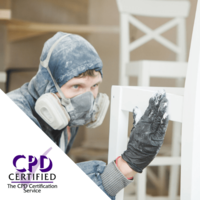 |
| Postnatal Depression Awareness |
| All about this course Postnatal depression impacts around 1 in 10 women at some point in the 12 months after giving birth. This course gives an in-depth look into what postnatal depression is and what signs are often shown in women who experience it. Working through the course students will develop a strong understanding of the feelings which are experience during this time and how to reduce the impact of postnatal depression on the mother. In order to complete the course, you must achieve 80% or more in the final multiple choice quiz. You will earn 2 CPD points on completion of the course. Fully CPD registered Completed online with instant downloadable certificate Fully printed certificate posted next day Covers all required legislation and practices Complete the online multiple choice assessment as many times as you need to pass Units covered Unit 1 – Understanding the Term ‘Postnatal Depression’: In this unit you will learn what the term postnatal depression means and start to understand the signs and symptoms of postnatal depression. You will also gain an understanding of the difference between postnatal depression and the baby blues, as well as the possible risk factors for postnatal depression. Unit 2 – Feelings associated with postnatal depression: Our next unit covers what the most common feelings are for an individual who has postnatal depression. These will include persistent low mood, irritation and frustration, exhaustion and a lack of motivation. Unit 3 – Reducing the risk of postnatal depression: Next we will look at the ways to reduce the risks of postnatal depression. These will include things which can be done both before and after giving birth and will gibe you a strong knowledge of the various preventative methods which can be taken. Unit 4 –Treatments for Postnatal Depression: Our final unit will cover the variety of ways to treat and support women who are experiencing postnatal depression. You will look at early medical involvement, counselling and antidepressants. We will look at each one in detail to gain an understanding as to how they can support a woman in overcoming postnatal depression.
Price:  |
| Prevent and Radicalisation |
| All about this course It is important for people who safeguard children and young adults to have knowledge on Prevent, as it will help them to spot signs of radicalisation. This course will cover what terrorism is, what Prevent and British values are, in line with the governments CONTEST strategy. We will also look at the warning signs of radicalisation and who is at risk, as well as looking at the guidance offered for the different sectors, including the Police, Prisons and Schools. This course is perfect for anyone working with children, young people or vulnerable adults that could be at risk of radicalisation. In order to complete the course, you must achieve 80% or more in the final multiple choice quiz. You will earn 3 CPD points on completion of the course. Fully CPD registered Completed online with instant downloadable certificate Fully printed certificate posted next day Covers all required legislation and practices Complete the online multiple choice assessment as many times as you need to pass Units covered Unit 1 – Introduction to Prevent, radicalisation and terrorism – In our first unit we will look at what is meant by Prevent, radicalisation and terrorism. Students will also learn what British values are, as well as Islamophobia in the UK. Unit 2 – Understanding radicalisation – In this unit we will look at the risks of people becoming radicalised, as well as the warning signs people need to look out for and how radicalisation takes place. Unit 3 – Compliance – In this unit it will be looking at what counter-terrorism is, what the CONTEST strategy is, as well as how a risk/vulnerability assessment can be carried out. Unit 4 – Specific guidance for sectors – In our final unit we will be looking at specific guidance for sectors such as schools, police and local authorities and why guidance needed to be put in place and who it tries to protect.
Price: 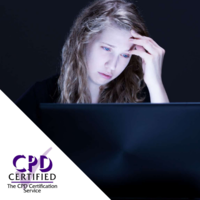 |
| RIDDOR Awareness |
| All about this course This RIDDOR course covers everything that has to be reported relating to injuries, diseases and dangerous occurrences. Throughout the course RIDDOR legislation in Northern Ireland and Great Britain will be covered. Students will gain the knowledge of employee responsibilities surrounding RIDDOR as well as covering when a RIDDOR report should be made, who should make the report and how to keep records of reports. In order to complete the course, you must achieve 80% or more in the final multiple choice quiz. You will earn 3 CPD points on completion of the course. Fully CPD registered Completed online with instant downloadable certificate Fully printed certificate posted next day Covers all required legislation and practices Complete the online multiple choice assessment as many times as you need to pass Units covered Unit 1 – Introduction to RIDDOR – In our first unit we will be exploring what RIDDOR is and the reporting requirements of the regulations. We will also be looking at the changes from the 1995 regulation to the 2013 regulation as well as the importance of reporting and recording internally within an organisation. Unit 2 – Reportable Incidents – Next we will look at an overview of what is reportable in Great Britain and Northern Ireland explaining what needs to be reported to RIDDOR and what doesn’t. We will also explore the different categories of injuries that need to be reported under RIDDOR. Unit 3 - Reportable Diseases, Dangerous Occurrences and Incidents – Throughout this unit we will be looking at the categories of disease that legally have to be reported in Great Britain and Northern Ireland. We will also look at the procedure for reporting gas hazards and incidents to the enforcement agency. Unit 4 – Reporting an Incident – In this unit we will be looking at the timescales that is given for the different reportable incidents and we will learn when a report should be made under RIDDOR. This unit will also explain the different reporting forms available and how to make amendments to reports once they have been submitted. Unit 5 – RIDDOR and the Law – In our final unit we will be looking at the possible circumstances where people may be breaching RIDDOR regulations Students will also look at the involvement of enforcement agencies and the penalties for breaking the law.
Price:  |
| Safeguarding Children Level 2 |
| All about this course Safeguarding children is something of the upmost importance and a course is how to protect children from abuse is required of anyone working with people under 18. This course will provide you with in-depth information about how to recognise risks, spot the signs that a child is being abused and how to report any concerns. It will Child protection laws in England, Northern Ireland, Wales and Scotland are covered so the course is suitable throughout the UK. We will also cover the child abuse statistics, as well as some case studies of child abuse. This course is perfect for teachers, nursery workers, nurses, doctors, social workers or anyone else who works with children in their day-to-day role. In order to complete the course, you must achieve 80% or more in the final multiple choice quiz. You will earn 3 CPD points on completion of the course. Fully CPD registered Completed online with instant downloadable certificate Fully printed certificate posted next day Covers all required legislation and practices Complete the online multiple choice assessment as many times as you need to pass Units covered Unit 1 – Introduction to safeguarding - In our first unit we will be looking at what ‘safeguarding means’. We will explore who is responsible for protecting children from abuse, as well as statistics about the different types of child abuse. Unit 2 - Safeguarding structure - In our second unit we will be looking at the what the single assessment is. We will look at the possible outcomes of the assessment and what happens if there is a risk of serious imminent harm. Unit 3 – Types of abuse – In this unit we will be looking at the different forms of abuse that a child may be exposed to and who may be an abuser. Unit 4 – Recognising risks – In this unit we will look at how you can recognise the risks of child abuse. It will also look at how to judge if a report needs to be made or not. It will also cover what makes children more vulnerable to child abuse. Unit 5 – Reporting concerns – In this unit we will be looking at when and how to make a report. We will be looking at whether or not it is appropriate to inform the child’s parents about the suspected abuse. This unit also covers who reports should be reported to. Unit 6 - Post referral – In our final unit we will be looking at what happens after a referral has been made and the potential outcomes of it. This unit will also explain what a child protection conference is.
Price: 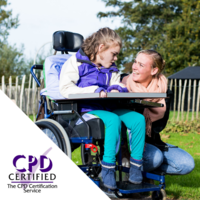 |
| Safeguarding Children Level 3 |
| All about this course This course gives the user good knowledge about why safeguarding is so important. It explains the role of the designated safeguarding lead, what they are responsible for and the training they must do. Single assessments are introduced, as well as the levels in the threshold of needs. The course also looks at the short term and long-term risks that a child can suffer from being abused. Finally, procedures on how to report and respond to concerns that a child is being abused and the steps to follow are covered in detail. Ideally you will have attained your Level 2 in Safeguarding Children before starting this course. In order to complete the course, you must achieve 80% or more in the final multiple choice quiz. You will earn 5 CPD points on completion of the course. Fully CPD registered Completed online with instant downloadable certificate Fully printed certificate posted next day Covers all required legislation and practices Complete the online multiple choice assessment as many times as you need to pass Units covered Unit 1 – Introduction to safeguarding – In our first unit it will explain what safeguarding is and who the responsible person is. It will finish off by looking at the statistics relating to child abuse. Unit 2 – Safeguarding and the law – This unit will look at the law surrounding safeguarding and what the key principles of the acts are. It will explain each law in detail and give background information on why they came into place. Unit 3 – Safeguarding structure - In this unit we will be looking at what is involved for a child in the single assessment. It will explain how safeguarding is applied to children who live with different disabilities. Unit 4 – Types of abuse – This unit will look at all possible types of abuse that a child may be exposed to. It will explore what the signs and symptoms are that a child may be being abused. This unit will also look at who may an abuser. Unit 5 – Recognising Risks – In this unit we will be looking at how you can recognise the risks of a child being abused. It will explore what risk factors can make a child more susceptible to being abused or neglected. Unit 6 – Reporting and responding to concerns – This unit will look at how a person can report and respond to concerns that a child is being abused. It will look at the different types of disclosure and how to record concerns and disclosures. Unit 7 – Recording concerns – This unit will be looking in detail how to report and record concerns that a child is being abused. It will look at the methods that are most useful. Unit 8 – Post referral – In our final unit we will be looking at what happens after a referral has been made. As well as the timescale of a single assessment. It will also explain in detail about the thresholds of need guidance and the four levels.
Price: 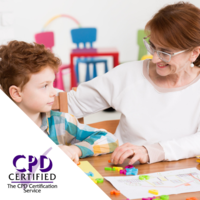 |
| Safeguarding Vulnerable Adults |
| All about this course This safeguarding vulnerable adults course will help employees understand what to do when abuse is alleged or suspected, how it can be reported and how to protect the individual. It will also cover the mental capacity act and how this act helps to protects vulnerable adults, as well as highlighting the types of abuse that an adult may be exposed to and the signs and symptoms to look out for. Policies and procedures that should be put in place to protect staff and vulnerable adults are covered, as well as safe ways to recruit new staff. In order to complete the course, you must achieve 80% or more in the final multiple choice quiz. You will earn 3 CPD points on completion of the course. Fully CPD registered Completed online with instant downloadable certificate Fully printed certificate posted next day Covers all required legislation and practices Complete the online multiple choice assessment as many times as you need to pass Units covered Unit 1 – Legislation – The first unit will look at the legislations that are in place to ensure that everyone who is considered to be vulnerable is treated in a way that is equal, lawful and ethical. Unit 2 – Types of abuse – This unit will look at the different forms of abuse that an adult may be exposed to due to their vulnerability and why some adults may be more vulnerable than others. Unit 3 – Mental Capacity – This unit will look at how some vulnerable adults might be incapable of making their own decisions safely and effectively. It will give examples of people that may lack their own capacity and how to assess this. Unit 4 – Disclosures and How to respond to them – In this unit we will explore what employees are required to do when abuse is alleged or suspected. We will also look at the different types of disclosure and how to respond to these. Unit 5 – Safer recruitment – In the final unit it will look at how to respond to allegations against staff in a work setting and what policies and procedures should be in place to protect staff and vulnerable adults.
Price: 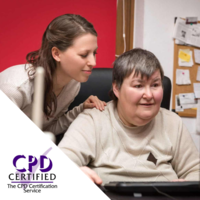 |
| Safer Recruitment |
| All about this course This Safer Recruitment course is perfect for people who work in settings with children, young people and vulnerable adults. It covers the policies and checks required to ensure that the recruitment process has the safety of children and vulnerable people as a priority. Throughout this course you will cover best practices throughout the recruitment process. From the selection process right up to a new recruit starting in a role, we will explore how to check suitability throughout the hiring process.The course also explains the various checks needed when employing someone new to work with children including DBS checks, overseas checks and eligibility to work in the UK. This course is perfect for people working in nurseries, schools, foster homes or and kind of support service for children. You will earn 3 CPD points on completion of the course. Fully CPD registered Completed online with instant downloadable certificate Fully printed certificate posted next day Covers all required legislation and practices Complete the online multiple choice assessment as many times as you need to pass Units covered Unit 1 – Preparing to Recruit – In our first unit we will be looking at the early stages of recruitment and what the importance of the job description, as well as the person specification in getting the right applicants for the role. Unit 2 – The Selection Process – This unit will be looking at the process that takes place once job adverts have been replied to, as well as ways in which organisations can ensure they are not acting in a discriminatory way. Unit 3 – The Interview Process – In this unit we will be looking at what happens once candidates have been chosen to take part in an interview, as well as some questions and techniques that organisations can use to ensure they choose the most appropriate candidate. Unit 4 – After the Interview – In this unit we will explore the processes that an organisation puts into place once initial interviews have been completed, it will also look at contacting referees and the types of references. Unit 5 – Pre Appointment – In this unit will be looking at the importance of checks, including DBS checks, criminal record checks, as well as health checks. It will also look at how to ensure a candidate is eligible to work in the UK legally. Unit 6 - Starting Employment - In our final unit we will look at the importance of ensuring health and safery in the work place, as well as what happens during probationary period, as well as the benefits of them being supervised.
Price:  |
| Schizophrenia Awareness |
| All about this course This Schizophrenia Awareness course develops your understanding of what Schizophrenia is, what causes it and how it can be treated. The units will ensure that you have an in-depth knowledge of how Schizophrenia can manifest itself and various therapies and medications which are useful in controlling symptoms. Anyone who works with someone that has been diagnosed with Schizophrenia will benefit form this course. This could include mental health workers, care support staff and anyone else working in the care sector. In order to complete the course, you must achieve 80% or more in the final multiple choice quiz. You will earn 2 CPD points on completion of the course. Fully CPD registered Completed online with instant downloadable certificate Fully printed certificate posted next day Covers all required legislation and practices Complete the online multiple choice assessment as many times as you need to pass Units covered Unit 1 – Understanding the Term ‘Schizophrenia’: In this unit of the course we will look at the term Schizophrenia and define this mental illness. We will look at some statistics of Schizophrenia and how the illness is portrayed in the media. Unit 2 – The Causes of Schizophrenia: Next up we will move on to explore the causes of Schizophrenia and examine the possible causes associated with the illness. This will include a variety of biological and environmental factors that may contribute to a higher risk of suffering from Schizophrenia. Unit 3 – How Schizophrenia affects people: Schizophrenia affects people in several ways and will have a huge impact on a persons life. In this part of the course we will explore some of the common behaviours seen in Schizophrenia patients and how these changes impact upon their life. Unit 4 – Interventions for Schizophrenia: There are a number of different ways to aid a person who has Schizophrenia so that the illness does not impact upon their life too much. Next we will explore a number of these methods including ECT, hospitalisation, anti-psychotic medication, crisis resolution and CBT. Unit 5 – Managing Schizophrenia: Learning to manage the condition on a day-to-day basis is often something which is required of people that have Schizophrenia. Here we will look at the methods that can be used daily to reduce the impact on individuals and their family.
Price: 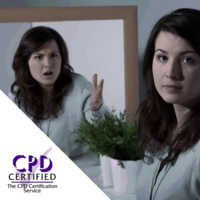 |
| Schools CPD bundle |
| Certificates for courses in this bundle are downloadable only - a hard copy is not sent to you. All about this course bundle Our Schools CPD course bundle is perfect for teachers, managers and support staff who work in education settings. Allowing you to keep your CPD fully up-to-date, this package includes courses such as Safeguarding Children Level 2 & 3, Food Hygiene, Fire Safety and Mental Health Awareness. Each of the courses in this package has met the requirements to be classes as CPD by the CPD Certification Service. This means that the courses are completely approved by governing bodies such as Ofsted. Each course comes with a fully downloadable PDF certificate that is accessed after you complete the training. You can enrol any time for our Schools CPD bundle and access all of the courses for a full 12 months. Fully CPD registered Completed online with instant downloadable certificate Multiple courses included Covers all required legislation and practices Complete the online multiple choice assessment as many times as you need to pass 12 month access Courses covered
Price: 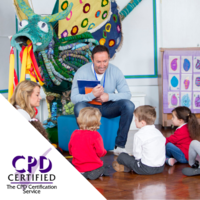 |
| Silver package |
| All about this course package This Safer Recruitment course is perfect for people who work in recruitment or are in charge or recruiting new staff for their business. It will cover all the steps you need to take in preparing to recruit, right through to when the new candidate starts their job. This course will also cover the legislation and policy that you need to be aware of when recruiting. This course will look at the best places to advertise jobs and why, how to speed up the process of sifting through applications and what the key details are to look out for. It will also look at what special requirements applicants may need and how to make sure you comply to them. This course will also look at The Equality Act 2010 and what protected characteristics means. It will also look at the types of possible discrimination organisations must be aware of in the recruitment process. Fully CPD registered Completed online with instant downloadable certificate Fully printed certificate posted next day Covers all required legislation and practices Complete the online multiple choice assessment as many times as you need to pass Units covered Unit 1 – Preparing to Recruit – In our first unit we will be looking at the early stages of recruitment and what the importance of the job description, as well as the person specification in getting the right applicants for the role. Unit 2 – The Selection Process – This unit will be looking at the process that takes place once job adverts have been replied to, as well as ways in which organisations can ensure they are not acting in a discriminatory way. Unit 3 – The Interview Process – In this unit we will be looking at what happens once candidates have been chosen to take part in an interview, as well as some questions and techniques that organisations can use to ensure they choose the most appropriate candidate. Unit 4 – After the Interview – In this unit we will explore the processes that an organisation puts into place once initial interviews have been completed, it will also look at contacting referees and the types of references. Unit 5 – Pre Appointment – In this unit will be looking at the importance of checks, including DBS checks, criminal record checks, as well as health checks. It will also look at how to ensure a candidate is eligible to work in the UK legally. Unit 6 - Starting Employment - In our final unit we will look at the importance of ensuring health and safery in the work place, as well as what happens during probationary period, as well as the benefits of them being supervised.
Price: 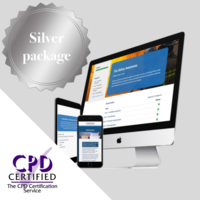 |
| Slips, Trips and Falls |
| All about this course This Slips, Trips and Falls course covers everything that you need to know about keeping yourself and others safe when working in conditions where there is the possibility of slips, trips and falls. The course will explore who is at higher risk of slips, trips and falls so students will be more aware of who needs to be protected. This course will also explore the importance of risk assessments and how to carry out a risk assessment. The course will finish off by exploring how to report an accident in the workplace, including the RIDDOR regulation. Finally you will finish off by exploring how to prevent slips, trips and falls in the workplace. In order to complete the course, you must achieve 80% or more in the final multiple choice quiz. You will earn 3 CPD points on completion of the course. Fully CPD registered Completed online with instant downloadable certificate Fully printed certificate posted next day Covers all hazards that can lead to slips and trips Explains the risks of falls Counted as staff training on health and safety Complete the online multiple choice assessment as many times as you need to pass Units covered Unit 1 - Introduction to slips, trips and falls - This unit will be exploring what slips, trips and falls are. As well common causes of slips, trips and falls will be covered and the injuries that can occur. Unit 2 - Key legislation - This unit will be covering the legislation applicable to slips, trips and falls and will consider who is responsible for managing the risks. Unit 3 - Identifying, assessing and controlling risks - This unit will consider the meanings of hazard, risk and risk assessments and will explore in detail how to carry out a risk assessment and the importance of completing them. Unit 4 - Reporting and recording - This unit will consider what usually happens if there is an accident in the workplace and the requirements of RIDDOR. Unit 5 - Prevention - In our final unit we will be looking at the importance of preventing slips, trips and falls in the workplace and what measures can be put into place to help prevent them from occurring.
Price: 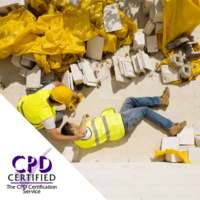 |
| Team Leading Level 2 |
| All about this course Our Team Leading online course is perfect for new or existing leaders to learn the basics of motivation and effective leadership. Tips on how to succeed in leading a team are found throughout the units and the course covers motivation skills, valuing diversity, managing change, conflict management as well as effective leadership styles. This course will also look at Tuckman’s stages of group development, the six stigma approach and the PDSA cycle. The course is not industry specific so can be applied to any job role. In order to pass the course, you must achieve 80% or more on the final multiple choice quiz. You will earn 3 CPD points on completion of the course. Fully CPD registered Completed online with instant downloadable certificate Fully printed certificate posted next day Perfect for new and existing team leaders Complete the online multiple choice assessment as many times as you need to pass Units covered Unit 1 - The Benefits of Effective Leadership - In our first unit we will be exploring the benefits of effective leadership and look at what the benefits of leaders are, as well as what they bring to an organisation. We will also look at the different steps in Tuckman's stages of group development. Unit 2 - Managing Objectives and Changes - In this unit we will be looking at the importance of setting targets and objectives in a business, we will also look at ways that workers can be supported during periods of change. Unit 3 - Equality and Diversity - This unit will be covering what Equality and Diversity are and why they are essential in the workplace, we will also look at how to support equality and diversity in the workplace. Unit 4 - Communication and Motivation - This unit will explore the different methods of communication and the importance of having good communication in the workplace, we will also look at the factors that motivate staff in the workplace and how this will help the business. Unit 5 - Managing Performance - In this unit we will be looking at how you can benchmark progress, we will also look at the six sigma approach, as well as the PDSA cycle, the unit will finish off by looking at how to manage under-performance in the workplace. Unit 6 - Conflict management - In our final unit we will be looking at when and why conflict occurs in the workplace, as well as how you can manage conflict, this unit will finish off by looking at ACAS and what their recommendations are for when conflict occurs.
Price:  |
| Understanding Eating Disorders |
| All about this course This Understanding Eating Disorders online course helps students to fully understand what an eating disorder is as well as how to help people that may have an eating disorder. Covering all of the major eating disorders such as Anorexia, Bulimia and Binge Eating Disorder (BED), the course is perfect to help people to fully understand how this type of mental issue can impact people. This course is perfect for anyone working in mental health or even people that work with young children and teenagers. As eating disorders often start during puberty, this course is great for anyone working in schools and colleges to ensure they have the knowledge to be able to spot the signs of people in their care who may have issues with food. In order to complete the course, you must achieve 80% or more in the final multiple choice quiz. You will earn 2 CPD points on completion of the course. Fully CPD registered Completed online with instant downloadable certificate Fully printed certificate posted next day Covers all required legislation and practices Complete the online multiple choice assessment as many times as you need to pass Units covered Unit 1 – Understanding the Term ‘Eating Disorder’: In the first unit of this course we will look at what eating disorders are and the different types of disorder people can have. Eating disorders can fall into many categories but the main three are anorexia nervosa, bulimia nervosa and binge eating disorder (BED). Each of these will be fully explained here and the signs of each covered in depth. Unit 2 – Symptoms Associated with Eating Disorders: Next we will explore the signs and symptoms of eating disorders including physical, psychological and behavioural. The symptoms of eating disorders can be very serious and have a huge impact on a persons health. Therefore, recognising the symptoms and knowing when to offer support is key. Unit 3 – Ways eating disorders affect people lives: In this unit we will look at how eating disorders affect people and their lives. The physical effects will be explained as well as the psychological strain which is placed on a person with an eating disorder. Family and personal relationships will also be covered to understand how these are affected. Unit 4 – Treatment of Eating Disorders: In the final unit of this course we will cover methods of treatment for those with eating disorders. Various counselling techniques will be explained, as well as monitoring and hospitalisation should this be necessary in extreme circumstances.
Price: 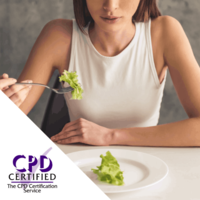 |
| Understanding GDPR |
| All about this course This course is perfect in helping people have more understanding of this legislation, it will help EU citizens to understand how their data is being used. Businesses must comply with new GDPR legislation, or they could get into serious trouble and this course covers how information should be collected in order to be lawful. It will also look at how data can be extracted, processed and stored, as well as what individual rights are surrounding their personal information. This course is perfect for anyone who works in an environment where they handle people's personal data, this includes company owners, managers and supervisors. You will earn 3 CPD points on completion of the course. Fully CPD registered Completed online with instant downloadable certificate Fully printed certificate posted next day Covers all required legislation and practices Complete the online multiple choice assessment as many times as you need to pass Units covered Unit 1 – Introduction to Data Protection – In our first unit we will be looking at what data protection is and what the legal responsibilities of companies are, it will also look at the updated Data Protection Act 2018. Unit 2 – The Key Principles of GDPR – In this unit we will be looking at what GPDP is and the overarching aims, it will also look at the 12 step process businesses can use to show they are compliant to GDPR. Unit 3 – Extracting, Processing and Storing Data – This unit will look at how GDPR links to data and what the legal requirements are for organisations. It will also consider the ways to safely store data. Unit 4 – The Rights of Individuals – This unit will look at what individuals’ rights are in regards to data, as well as how people can object to having their data stored. Unit 5 – Responsibilities of Data Controllers – In our final unit we will be exploring what the responsibilities of data controllers are. We will also look at the importance of applying with appropriate levels of data security and what can happen if companies don’t comply with these.
Price: 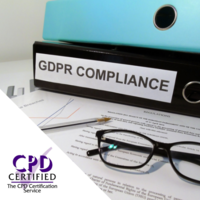 |
| Understanding Phobias |
| All about this course This course is perfect for anyone looking to gain a knowledge of what phobias are and how to start the process of overcoming a phobia. The course improves your knowledge of what a phobia is and what feelings are experienced by someone with an extreme phobia. It then moves on to explain how phobias can be treated and the benefits of different methods. The course is perfect for anyone working in mental health or care that deals with people who suffer from phobias. In order to complete the course, you must achieve 80% or more in the final multiple choice quiz. You will earn 2 CPD points on completion of the course. Fully CPD registered Completed online with instant downloadable certificate Fully printed certificate posted next day Covers all required legislation and practices Complete the online multiple choice assessment as many times as you need to pass Units covered Unit 1 – Understanding the Term ‘Phobia’: In this first unit we will look at the term ‘phobia’ and the meanings and definitions behind this. Having a strong understanding of different phobias, as well as how these are defined and categorised is essential when helping people to overcome their phobias. Unit 2 – The Possible Causes of Phobias: Through this unit we will cover the causes of phobias and how they start to manifest themselves in people. Like many mental illnesses, the causes of a phobia are not certain and are thought to be due to several factors. We will cover a number of possible causes including evolutionary, classical conditioning, learned responses, trauma, genetics and long-term stress. Unit 3 – The feelings when experiencing a phobia: Understanding the feelings of someone who suffers from a phobia can be very difficult if you do not share the same fears. In this part of the course we will look at the feelings that phobias cause individuals including physical, psychological, behavioural, cognitive, cognitive symptoms irrational thoughts. Unit 4 – How a phobia can affect a person’s life: Phobias can have a huge impact on a person’s life if they are not tackled correctly. Here we will look at the main impacts which phobias can have on people and those around them. We will look at the following impacts social changes, fear and confidence, isolation and how phobias affect others. Unit 5 – Treating phobias: Treating phobias can be very tricky but is vital in allowing people with prominent phobias to lead a normal life. In this final unit we will look at the common treatments used for people with phobias and how these are carried out. Some of the treatments will include relaxation, CBT, therapy, systematic desensitisation and exposure therapy.
Price: 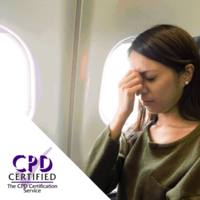 |
| Understanding Stress |
| All about this course Stress can be very dangerous for long term health. This course will teach you these dangers and help you to understand the need for stress management to ensure that a person's stress does not develop into something more severe. Techniques to manage stress will be explored including physical activities and thinking techniques. This Understanding Stress course is perfect for anyone who works in mental health or any other care role who requires a strong knowledge of stress coping techniques. In order to complete the course, you must achieve 80% or more in the final multiple choice quiz. You will earn 2 CPD points on completion of the course. Fully CPD registered Completed online with instant downloadable certificate Fully printed certificate posted next day Covers all required legislation and practices Complete the online multiple choice assessment as many times as you need to pass Units covered Unit 1 – Understanding the Term ‘Stress’: In the first unit of this course we will look at understanding the term stress. Stress is a burst of energy cause by the release of the hormone adrenaline into the blood stream stress can be good such as the adrenaline making the individual feel motivated or focused and bad such as causing weakening to the immune system and insomnia. We will look at the different types of stress and the different effects of stress (both good and bad) on an individual in more detail. Unit 2 – Feelings experienced when stressed: Stress is very difficult for an individual to go through both short and long term in this unit we will look at how it can affect an individual physically, mentally and emotionally causing a range of different symptoms in these different areas. This unit we will look at the different feeling people experience when they are stressed. Unit 3 – How stress affects a person’s life: Next we will look at how stress can affect the different areas of a person’s life such as relationships, work and health (both physically and mentally). We will look at the internal and external demands experienced in everyday life and how these demands can contribute to stress, such as an individual’s job or where the individual lives. Unit 4 – How Stress Can Be Managed: Finally we will look at how an individual can spot when they are becoming stressed and what actions they can take to manage their stress such as exercising. Physical activity can boost the feel good hormones such as serotonin and make an individual feel happier and see their life in a more positive light. Local support offered to individuals suffering from stress will also be explained.
Price: 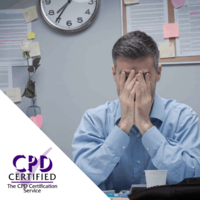 |
| Working at height |
| All about this course In this work from height course we will look at what is classed as work at height and the main industries that are at higher risk of falls. We will consider why risk assessments are important and look at who is responsible for carrying out the risk assessment, as well as the five steps of a risk assessments. We will also explore some of the work at height equipment that people can use to assist them in their work. In order to complete the course, you must achieve 80% or more in the final multiple choice quiz. You will earn 3 CPD points on completion of the course. Fully CPD registered Completed online with instant downloadable certificate Fully printed certificate posted next day Covers all required legislation and practices Complete the online multiple choice assessment as many times as you need to pass Units covered Unit 1 – Introduction to work at height – In our first unit we will be exploring what work at height is and the different examples of work at height. Unit 2 – Identifying, assessing and controlling risks – In this unit we will look at what a risk assessment is, why they are important and the five steps of a risk assessment. Unit 3 – Safety aspects for consideration – This unit will explore the types of hazards that can occur while working on a roof, as well as looking at why falls at height occur. Unit 4 – Training and safety equipment – In this unit we will look at some examples of work at height training and consider what types of PPE needs to be used. Unit 5 – Working at height equipment – In our final unit we will be looking at the types of work at height equipment and the factors that should be taken into consideration when selecting work at height equipment.
Price:  |